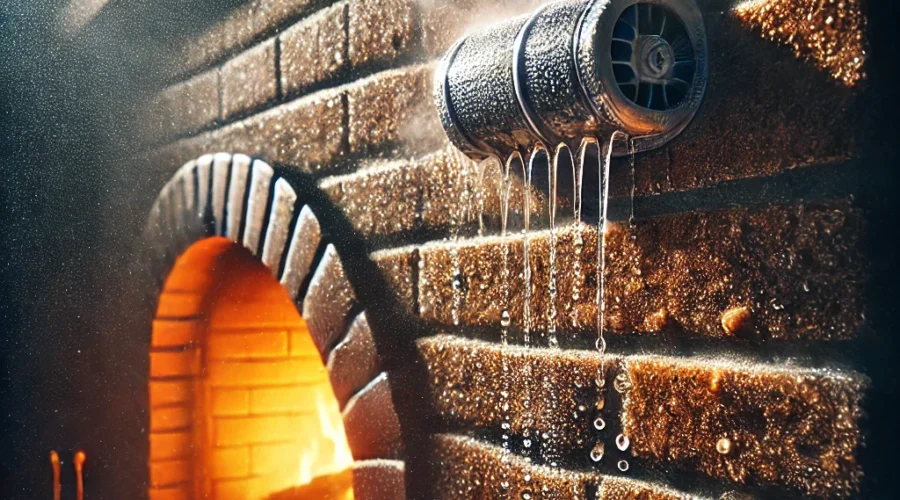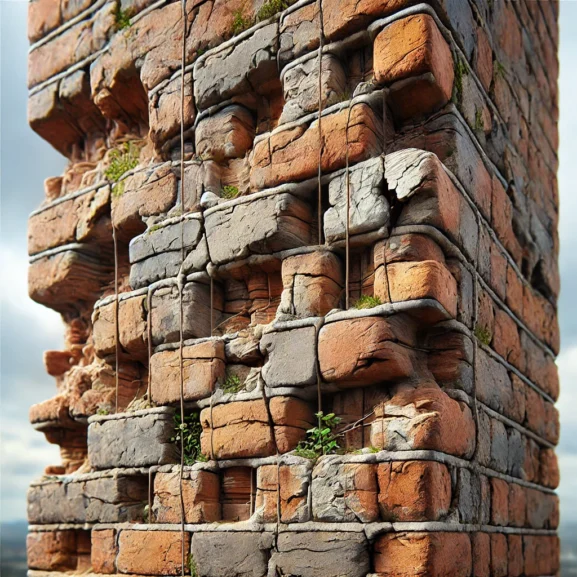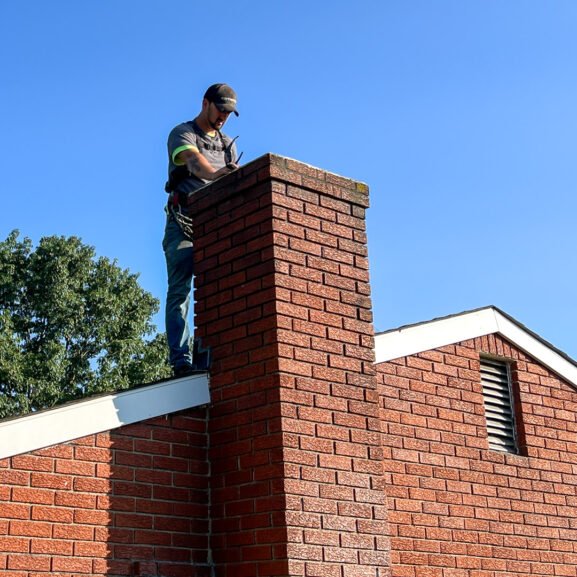How Unvented Gas Logs Lead to Excessive Moisture in Your Chimney
Fireplaces are extremely popular in the colder part of the year when everyone wants to drink hot tea and simple enjoy the warmth of the hearth. But for those that continue to use unvented gas logs, there is a secret that could be in the chimneys. As if only these logs are used for cooking, they give a good amount of heat but they collect moisture. This is not just a minor issue of damp; there is a lot of damp for it to cause some significant harm in the long run.
It is not evident to many of us that unvented gas logs emit water vapor when they are burning. With time, this vapor accumulates in the chimney system, which fosters mold and mildew growth as well as some structural deterioration. These are risks that have to be grasped by any entrepreneur who intends to venture into this kind of investment. Action allows us to maintain the safety and coziness of our home. So, let’s consider how we can fight this problem and make sure that our fireplaces remain delightful and functional.
What You Need to Know About Unvented Gas Logs
Non-electric gas logs help to provide supplemental heat and a rich, warm appearance to your home. Nevertheless, they are famous for the moisture problems they cause. So let us examine how they works and possible consequences in details now.
What Are Unvented Gas Logs?
Ventless gas logs, or unitized, have no requirement for an exterior vent. It burns cleanly, using air of the room and they are pretty effective. However, those fireplaces not connected to a chimney vent assist in indoor humidity; thus, induce formation of moisture. People like unvented appliances because they can easily be installed. But they possess some drawbacks.
These gas logs do not blow exhaust out. That is why they release more water vapor inside. However, at times there is too much condensation on walls and ceilings, which may lead to damage on these parts of the building. Safe usage is achieved by installation by qualified personnel. Reach out to professionals for consultation.
How Do They Work?
Unvented gas logs work by drawing in oxygen from the room to kindle a fire and make heat. When they burn, they produce things such as carbon dioxide gas. These logs are to be used in ways that combust the fuel thoroughly. They cannot affect exterior air quality yet still can influence the circulatory interior air quality. There are certain things that need to be done periodically in order to avoid having gas fireplace problems.
The moisture in chimneys can be managed through proper chimney maintenance and this will reduce chimney problems. Unlike normal fireplaces, these systems use a circulation of warm air around a given room. But this if left uncontrolled by moisture control measures may lead to chimney moisture.
Check out these resources from the National Fire Protection Association and the Chimney Safety Institute of America for more information on maintaining indoor air quality and preventing venting issues.
The Issue of Excessive Moisture
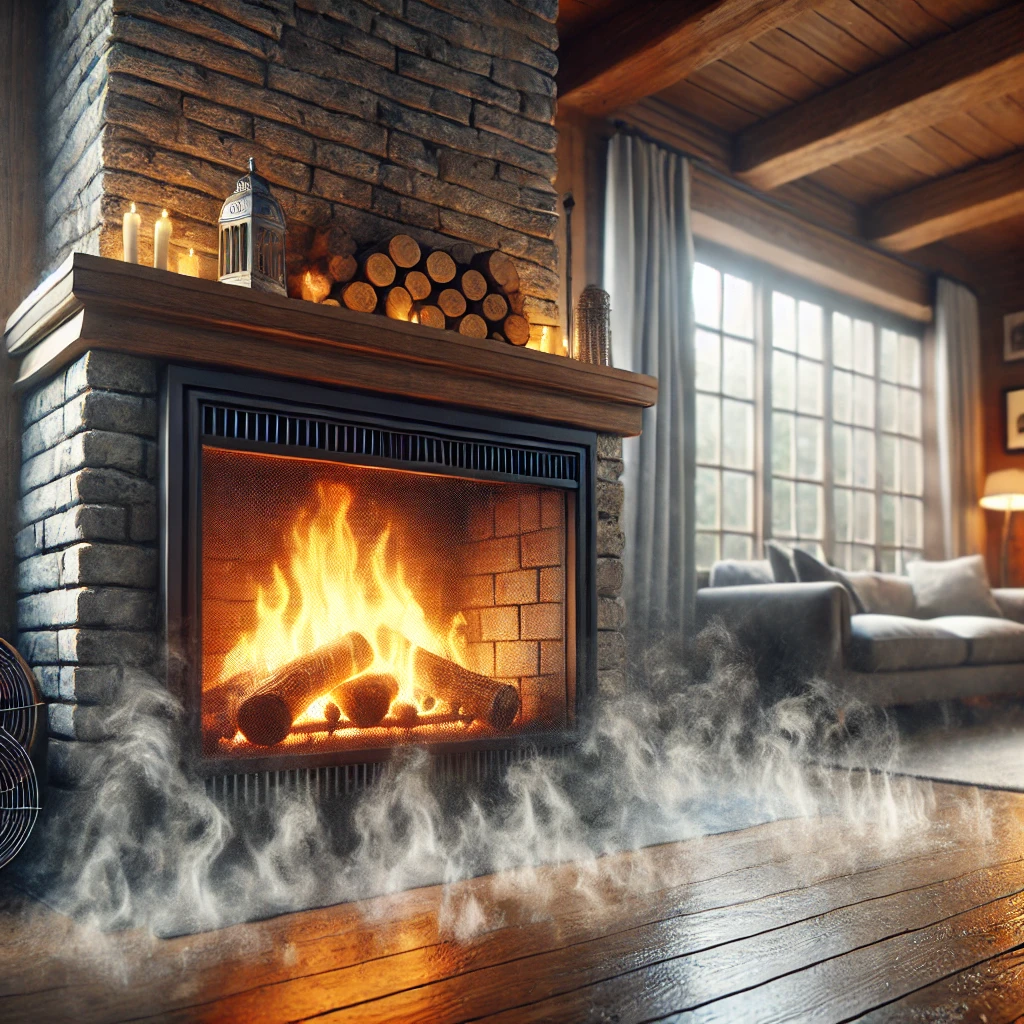
While unvented gas logs may seem like an ideal way to bring the heat, they pose a danger of accumulating moisture in your chimney. This moisture is not a small kind of wetness. If it is not addressed it can culminate in serious issues.
Causes of Moisture Buildup
In the combustion process, unvented gas logs release water vapors into the room. Since it has no other place to go, it forms part of indoor humidity levels,” In other words, it implies. When the sex is cooler, vapor begins to change and form condensate in the form of liquid droplets in the chimney.
Here’s what we’re up against:
- Unvented Gas Logs: These logs release moisture into the air.
- Indoor Humidity Increase: Trapped moisture raises indoor humidity.
- Venting Issues: The absence of external venting worsens moisture problems.
A nice looking gas log fire, should not make the house we live in – a sauna. If you wish to regulate moisture then get it professionally fitted as it is designed for that purpose. It also comes to the attention that the equipment requires professional attention as frequently as possible.
Impact on Chimney Structure
Moisture wreaks havoc inside chimneys over time. Excessive condensation leads to chimney damage such as:
- Mold and Mildew: Dampness spawns harmful growth. Mold in your chimney? That’s where witches belong, not fungi.
- Structural Weakening: Water can erode mortar, compromising chimney integrity.
- Indoor Air Quality Concerns: Moisture among bricks promotes respiratory issues.
Routine chimney maintenance ensures safe, cozy fires. Temperatures often fluctuate, and humidity levels can be high. These conditions can make problems worse, so it’s important to get help from experts like us.
For further guidance, consult resources from the National Fire Protection Association and the Chimney Safety Institute of America.
Impact on Indoor Air Quality
Excessive moisture from unvented gas logs can harm indoor air quality. Understanding how this happens and addressing the risks is key to keeping your home environment healthy.
Potential Health Risks
Using unvented gas logs can be harmful to us. They can raise the humidity levels in our homes. This increase in humidity can lead to health problems. Elevated indoor humidity levels create a perfect breeding ground for mold and mildew. These allergens can lead to respiratory issues like asthma and allergies. Prolonged exposure can result in more severe problems, such as lung infections. Excessive condensation might also cause indoor air to feel clammy and uncomfortable. Occupants may experience symptoms like stuffy noses and irritated skin. It’s essential to be aware of these risks as they can affect everyone in the household, including pets.
How to Mitigate Risks
We can reduce the risks of unvented gas logs by using moisture control strategies. Installing a dehumidifier helps lower indoor humidity levels, preventing mold growth. Regular chimney maintenance keeps unvented appliances working properly. A professional inspection can find and fix venting problems that cause moisture buildup. It’s a good idea to schedule regular check-ups, especially in areas, where humidity is high. Plus, taking care of your chimney not only protects your home—it helps keep unwanted pests away, too.
Reach out to professionals for consultation. For further reading on maintaining a safe home, check the National Fire Protection Association and Chimney Safety Institute of America.
Maintenance and Safety Tips
Unvented gas logs can cause chimney moisture issues, so regular maintenance is essential. Keeping everything in tip-top shape ensures a cozy home without unwanted surprises. Reach out to professionals for consultation.
Regular Inspection and Cleaning
- Schedule annual inspections. Experts can find early signs of damage. They can fix these issues before they worsen. It’s like a health check for your chimney.
- Clean regularly: Remove soot and debris. These can cause moisture buildup. Think of it as giving your chimney a spa day.
- Watch for trouble signs: Look for excess condensation and mildew. This could mean your gas logs are having a problem.
- Trust experts: Avoid DIY attempts—proper maintenance requires training. Learn more from the National Fire Protection Association for sound advice.
- Install high-quality venting systems: Properly installed vents reduce indoor humidity and moisture issues.
- Use dehumidifiers. These devices help control moisture, keeping the levels in check. This is especially important after using gas logs.
- Ensure proper airflow: Open windows occasionally, even in chillier months.
- Consult professionals: When unsure, reach out to a professional for assistance. For additional guidance, you can refer to recommendations from reputable organizations like the Chimney Safety Institute of America.
Alternatives to Unvented Gas Logs
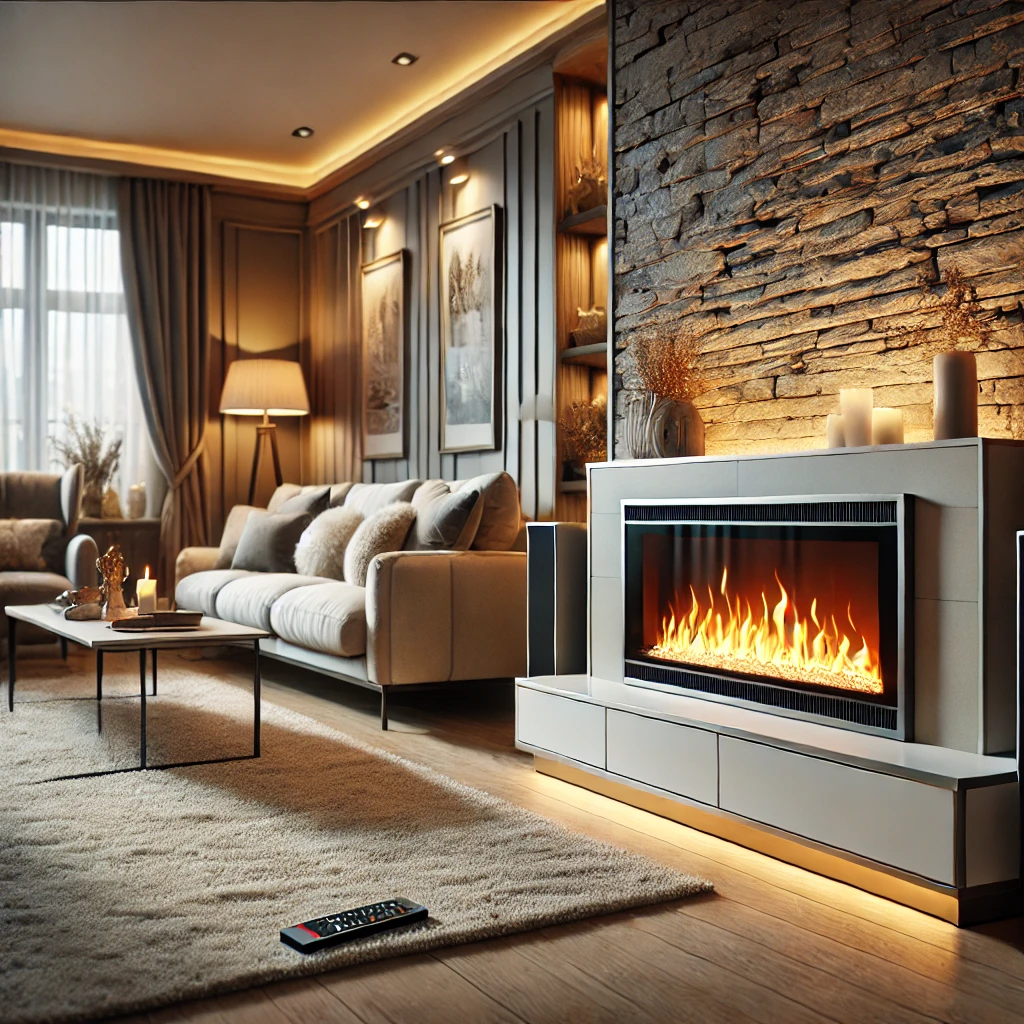
Unvented gas logs can create moisture and air quality issues. So, let’s explore some cozy alternatives that keep your home safe and dry. Reach out to professionals for consultation or click here for helpful information from the National Fire Protection Association.
Vented Gas Logs
Vented gas logs are safer than unvented ones. They use a chimney or vent to send gases outside. This reduces indoor humidity and prevents moisture buildup. You get the charm of a real fire without the moisture problems. Professional installation is important to make sure everything vents correctly. This helps avoid damage to your chimney. That’s why regular chimney maintenance is important. It helps prevent venting issues. We don’t recommend doing it yourself. It’s safer and more effective to let the experts take care of it.
Electric Fireplaces
Electric fireplaces provide a modern alternative with zero chimney moisture. They plug into the wall and don’t need venting, reducing the chance of indoor humidity. The beauty is you can enjoy the ambiance without gas fireplace problems. They’re great for small spaces where traditional set-ups might not fit. Electric fireplaces also come with remote controls. This lets you adjust the settings without getting up from your comfy chair. It’s important to have your electric fireplace installed by a professional. This helps avoid any problems down the road. For safety tips, consider visiting the Chimney Safety Institute of America.
Conclusion
Understanding how to deal with moisture from unvented gas logs as important measures for safety and comfort of our homes. Water is damaging and unhygienically unwholesome. If these problems are known, they can be avoided. The appropriate control methodology assists in maintaining our homes in a good state of health. Such problems can be identified easily through routine professional maintenance and inspections. There we can also select safer types such as vented gas logs or an electric fireplace. These can enhance safety and ease our minds, these are some of the options The options can make some things safer and help us feel safer These are some of the options which can make some things safer and help to ease our minds Let’s take action now. And this shows that if we are to consult expert advice we can be safely assured that the fireplaces we are using meet standard safety specifications. It will also assist in maintaining the structural integrity in addition to the quality of air indoors in our home.
Frequently Asked Questions
What are unvented gas logs?
Unvented gas logs, or vent-free logs, are heating elements that don’t need an external vent. They use air from the room to burn cleanly. This makes them efficient at providing warmth. However, they do produce water vapor when they burn. This can increase humidity indoors. If not managed properly, it can lead to moisture-related issues.
What moisture problems can unvented gas logs cause?
Water vapor from unvented gas logs can increase indoor humidity, leading to condensation on walls and ceilings. Over time, this moisture can cause mold and mildew to grow, structural damage, and air quality issues, which pose respiratory risks.
How can I prevent moisture issues with unvented gas logs?
To avoid moisture problems, make sure your unvented gas logs are installed correctly. Regular maintenance is also important. Use dehumidifiers to control humidity. Keep airflow proper to reduce moisture buildup. Schedule professional inspections and cleaning every year. This helps detect moisture and check for any chimney damage.
Are there safer alternatives to unvented gas logs?
Yes, safer alternatives to unvented gas logs are available. These include vented gas logs and electric fireplaces. Vented gas logs send gases outside, helping reduce indoor humidity. Electric fireplaces do not cause moisture problems. Both options need professional installation for safety.
Who should I consult for the maintenance of unvented gas logs?
For your safety and to maintain unvented gas logs, it’s best to get professional help. You can reach out to the National Fire Protection Association and the Chimney Safety Institute of America. They offer expert advice. They can guide you on indoor air quality and venting issues. Professionals can inspect your setup. They will check to make sure everything is working properly.
